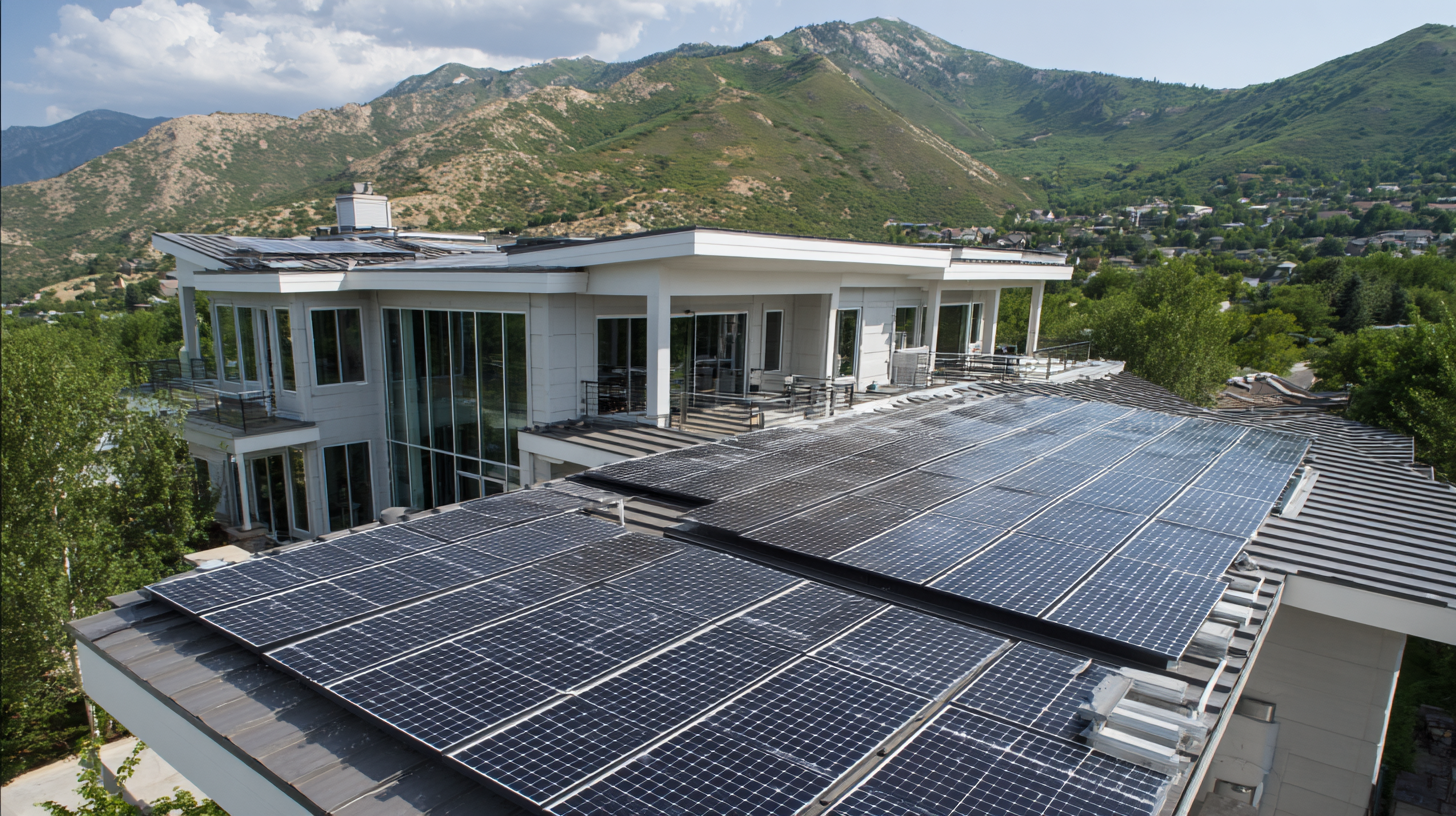10 Essential Tips for Choosing the Right Solar Power Providers in 2023
In the rapidly evolving landscape of renewable energy, selecting the right solar power providers is critical for maximizing both efficiency and cost-effectiveness. According to the latest report by the International Renewable Energy Agency (IRENA), the global solar power capacity reached an impressive 1,000 gigawatts as of 2023, underscoring the increasing reliance on solar energy solutions. As more homeowners and businesses transition to solar energy, the challenge of choosing a reputable provider becomes paramount.
Industry expert Dr. Emily Richards, a renowned scholar in renewable energy systems, emphasizes the importance of informed decision-making in this sector. She states, "Choosing the right solar power provider can significantly impact not only your energy savings but also the long-term sustainability of our planet." With numerous options available, it's imperative for consumers to carefully evaluate providers based on criteria such as experience, customer reviews, and product quality.

To navigate the complexities of selecting solar power providers, prospective customers must arm themselves with knowledge and insights. By understanding the essential factors that influence provider reliability and service excellence, users can ensure they make an informed choice that aligns with their energy goals and contributes to a greener future.
Understanding the Solar Energy Market: Key Growth Statistics and Trends in 2023
In 2023, the solar energy market demonstrates substantial growth potential, as evidenced by key statistics highlighting its expansion. The global solar energy market is projected to reach a remarkable worth of $223.3 billion by 2026, indicating a robust demand and investment in solar technologies. This trend underscores the necessity for potential investors and homeowners to understand the evolving dynamics within the solar industry, ensuring they make informed decisions when selecting solar power providers.
Additionally, the renewable energy sector as a whole is expected to grow significantly, shifting from an estimated size of $1.1 trillion in 2023 to a staggering $2.5 trillion by the end of the decade. These figures highlight a transformation in energy production and consumption patterns, pushing towards greener alternatives. With approximately 276,000 individuals employed within the renewable energy sector in 2023, showcasing an increase of 2.3% since 2010, there is a clear indication of the growing workforce dedicated to advancing sustainable energy solutions. Such developments not only reflect an increase in solar installations but also the overall commitment to a low-carbon future.

Evaluating Provider Experience: Importance of a Proven Track Record with Solar Installations
When selecting a solar power provider, evaluating their experience is crucial. A proven track record with solar installations not only showcases their capability but also reflects their understanding of the market dynamics and technology advancements. Companies with extensive experience tend to have refined their processes, resulting in more efficient installations and higher customer satisfaction. They are more likely to anticipate and mitigate potential issues, ensuring a smoother transition to solar energy for homeowners and businesses alike.
Moreover, an experienced provider can offer a wealth of knowledge regarding local regulations, utility requirements, and available incentives. This expertise can significantly reduce the complexities involved in obtaining permits and ensuring compliance. Additionally, providers with a solid history can usually furnish client testimonials and case studies, allowing prospective customers to gauge their reliability and effectiveness. By focusing on providers with substantial experience, customers can make informed decisions and enhance their chances of a successful solar installation.
Comparing Solar Technology Options: Efficiency Ratings and Innovations to Consider
As solar technology continues to advance, understanding efficiency ratings and innovations is crucial for selecting the right provider. The emerging Trombe wall, recognized for its ability to harness solar energy, represents a significant step in energy conservation. This innovative design focuses on concentration of solar energy to heat buildings effectively, showcasing how architectural solutions can contribute to sustainable energy practices.
Moreover, the development of advanced nanofluids, particularly graphene nanoplatelet-based ionanofluids, has sparked interest in enhancing heat transfer in hybrid photovoltaic-thermal solar collectors. These innovations aim to improve the overall efficiency of solar thermal energy systems, making them more attractive to consumers and businesses alike. Meanwhile, the advent of silver-free solar cells promises to reduce production costs while increasing efficiency, making solar technology more accessible. As the solar industry evolves, innovation remains key to driving adoption and optimizing energy solutions for a sustainable future.
Assessing Customer Reviews and Ratings: Analyzing the Impact on Provider Selection
When selecting a solar power provider in 2023, a crucial factor to consider is the impact of customer reviews and ratings. Much like the healthcare sector, where a significant 72% of patients read online evaluations before choosing a provider, potential solar customers should prioritize the insights captured in consumer feedback. These reviews not only highlight the quality of services and installations but also shed light on customer support and reliability. Finding a provider with consistently positive reviews can mitigate risks and enhance satisfaction with the solar investment.
Furthermore, just as restaurant reviews significantly influence dining choices, consumer ratings for solar power companies can reveal vital information about performance and customer experience. Prospective customers should analyze trends in feedback to determine which providers are respected in the industry. By carefully assessing reviews, customers can gain a better understanding of how different providers manage challenges, such as installation issues or maintenance services. This strategic approach will ultimately lead to the selection of a solar provider that aligns with their needs and expectations.
10 Essential Tips for Choosing the Right Solar Power Providers in 2023 - Assessing Customer Reviews and Ratings: Analyzing the Impact on Provider Selection
| Provider Type | Average Rating | Number of Reviews | Response Rate | Complaints/Total Reviews | Customer Satisfaction Score |
|---|---|---|---|---|---|
| Local Installer | 4.5 | 150 | 95% | 3/150 | 90% |
| National Provider | 4.2 | 500 | 85% | 8/500 | 87% |
| Online Marketplace | 4.0 | 200 | 80% | 15/200 | 84% |
| Regional Cooperative | 4.3 | 300 | 90% | 5/300 | 88% |
| Independent Consultant | 4.7 | 75 | 92% | 2/75 | 92% |
Exploring Financing Options: Understanding Incentives and Budget-Friendly Solutions for Solar Power
When exploring solar power options, understanding financing choices is crucial for making an informed decision. In 2023, federal incentives such as the Investment Tax Credit (ITC) allow homeowners to deduct 26% of the cost of solar systems from their federal taxes, significantly reducing upfront expenses. Additionally, many states offer their own incentives that can cover installation costs or provide rebates, making solar power more accessible.
When selecting solar power providers, it’s important to look for those that offer flexible financing solutions. Options like solar loans can spread out payments over time while keeping energy savings in mind. According to a recent report by the Solar Energy Industries Association (SEIA), nearly 60% of new solar residential installations were financed through loans in 2022, illustrating a growing trend toward budget-friendly solutions.
Here are some quick tips for choosing the right provider: First, ensure they offer transparent pricing and detailed cost breakdowns so you can evaluate the true financial impact. Second, check for customer reviews and their track record with financing options to gauge their reputation and reliability. Lastly, inquire about potential long-term savings on energy bills to assess the overall value of investing in solar power.

Related Posts
-

How to Choose the Right Solar Power Provider for Your Home
-

How to Choose the Right Solar Providers for Your Renewable Energy Needs
-

7 Essential Tips for Choosing the Right Solar Contractors for Your Home
-

How to Choose the Right Solar System Providers for Your Energy Needs?
-

How to Choose the Best Solar System Providers for Your Home Efficiency Needs
-

Unlocking Sustainable Savings: How Solar Energy Contractors Transform Your Home’s Efficiency
